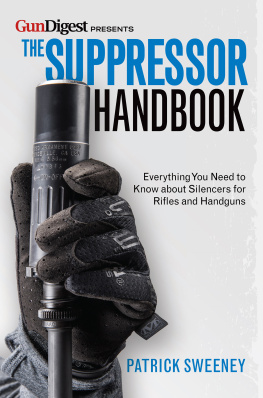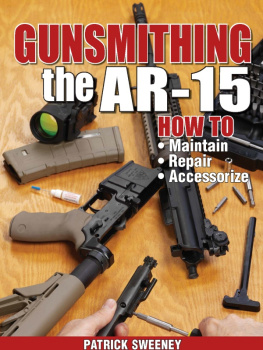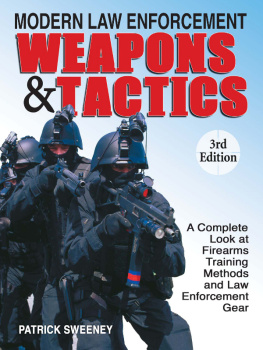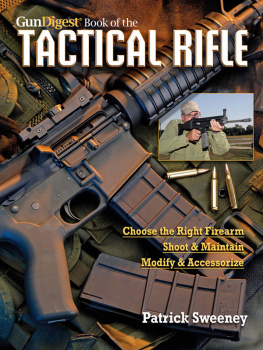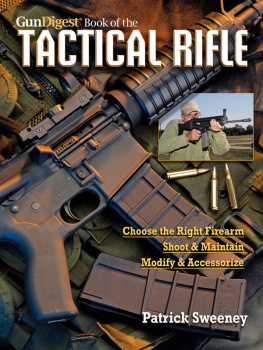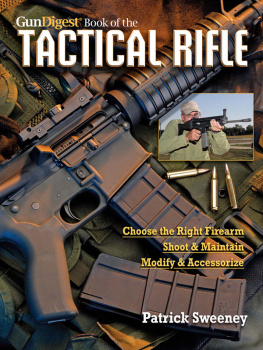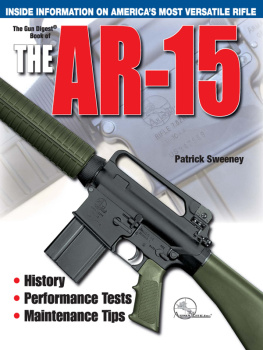Thank you for purchasing this Gun Digest eBook.
Sign up for our newsletter and receive special offers, access to free content, and information on the latest new releases and must-have firearms resources! Plus, receive a coupon code to use on your first purchase from GunDigestStore.com for signing up.
or visit us online to sign up at
http://gundigest.com/ebook-promo
GUNSMITHING
THE AR-15
VOLUME 2
Field-stripping
Detailed disassembly
Step-by-step instructions
PATRICK SWEENEY
DEDICATION
As always, and ever, to Felicia. Center, partner, team-mate, the best.
And also, to my father. Dad was born with exquisite timing. A kid during the great depression, he graduated from high school just in time to be drafted (like there was any doubt, or choice), get trained and be sent over to Europe. He wasnt airborne, but if you want to know what he did over there for seven months, just watch Band of Brothers Last Patrol. Night raids is what he did, night after night.
He then came back home, got married, raised a family, sent us to college and lived a good, long life. I learned from him a balance of practical and theoretical, research and good enough, and how to last over the long haul.
Thanks, Dad.
CONTENTS
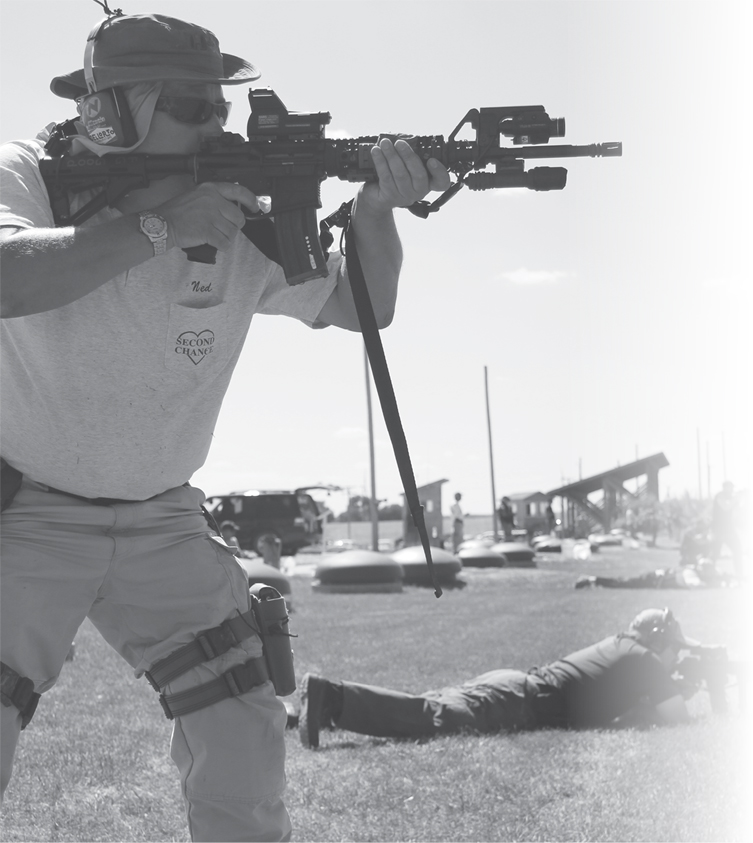
PREFACE
For a rifle that has been around for as long as the AR-15/M16, there is not a lot known for sure. Well, there is, but it is locked up in the safe of the various manufacturers who make good gear. Or on the shelf of the nearest Regular Army or NG training NCO, in training manuals that are hardly ever read.
On the other hand, there is a huge amount of information to be had, known, digested and used for decision making, but every bit of it is a small tidbit, a scattered data point, known to the guy or guys who tested/learned it, and not disseminated further. Mix in all the a buddy told me or information that everyone knows that is spread as gospel in guns shops and strewn all over the internet, and you have a real mess.
This book is for the new AR-15 owner (and the not-so-new owner as well) who is not interested in building a dozen different ARs, each with a perfectly-matched set of options, parts, features and goodies. If you are simply looking for info on how to keep your AR-15 running, how to de-bug it if it gets to acting cranky, or need to set right some minor error that the factory/builder didnt tend to, this is the book for you. If you pay attention, your AR-15 will be reliable, accurate, properly sighted-in, and all the parts and accessories on it will stay tightly attached. Plus, for those who just have to have it, this will have detailed assembly instructions, with the assumption that you have somehow acquired a box o parts and want to turn them into a working AR-15.
I wrote a lot of the first edition of Gunsmithing the AR-15 from the perspective that readers knew a lot more than they actually knew. It wasnt basic enough. This second volume takes a step back and covers many of those very basic things.
Those with a bit more experience will be tempted to skim over some sections. Id ask you not to do that, because there may well be some tidbit or gem, some detail not previously known, from which you could benefit. And those who know something that isnt true will benefit from reading the correct information. Im not one to brag, but I can say with more than a little certainty that if you know something and that fact is in disagreement with what Im telling you, that other fact is wrong. If you disagree, dont just shrug it off and declare me to be a fraud, ignorant or terminally dense. Do your homework. Do some testing. Find me on an internet forum someplace and ask how I know, what I know, that disagrees with your knowledge. Thats the only way well all learn.
Lets get to it.
INTRODUCTION
Your current, black aluminum, hated-by-politicians rifle differs from previous military rifles in, oh, just about every way possible. The AR-15/M16/M4 (lets just keep it simple, and refer to all of them as the AR) is a self-loading rifle that feeds from a box magazine and uses the direct-gas impingement operation system (aka, DI system). In most instances, it isnt a machine gun and it isnt an assault rifle, even though it gets called that by many.
And, just to get things on the correct footing, nowhere in any book I ever write on the AR will you ever read of me describing it as a weapon, unless it is so-used. That is, a weapon is what you use in a fight. In legal terms, it is the tool you use in any action under legal scrutiny. You do not shoot in a match with a weapon. You do not go hunting, or varmint plinking, with a weapon. Can it be a weapon? Yeah, sure, you betcha. But to describe it always as a weapon is to be sloppy with the English language, and I try very hard not to be sloppy. And where I do use that term, it is a deliberate choice.
The AR was not developed, like the M1 Garand or the M14, by the military, which tested, re-tested and modified as the process continued. It was a far messier process than that. The M1 Garand took almost twenty years to come to fruition, and its inventor, John Garand, had to be fast on his feet several times in that process to keep his baby from being killed. Post-WWII, the US Army Ordnance department spent a decade and millions of dollars improving the Garand, ending with the M14.
While the US Army was laboring to disgorge the M14, itself a barely-modified M1 Garand, an aerospace company by the name of Armalite (not the same company that today bears the name) was working on lightweight alloys and space-age designs. The designer there, Eugene Stoner, came up with an amalgam of design highlights and assembled them into a rifle with lightweight aluminum receivers. The result was a .308 rifle that weighed significantly less than then-current .308 rifles: the M14, G3 and the FAL.
Alas for Armalite, the militaries of the world, dragged along kicking and screaming by the US Army, had settled on .308, and since they had to use .308 they insisted on going with their own designs. They could not fight off being strong-armed into caliber, but by god they were going to make the rifle at home, and not depend further on Uncle Sams largesse.
Armalite then shopped the prototype around, and also down-sized it. Colt picked up the option to make the rifle for the sum of $75,000 and a small percentage of future profits.
The new Armalite was shown around the world, demonstrated anyplace someone showed interest, until someone managed to get it into the hands of General Curtis LeMay. LeMay was in charge of SAC, and was a WWII combat veteran. As an Army Air Force General in WWII, he was responsible for basically burning Japan to the ground in the last year of the war. SAC in the late 1950s and early 1960s meant B-52 bombers, loaded with nukes, waiting on runways to be flown north and at the Soviets. And B-52s loaded with nukes required armed guards.
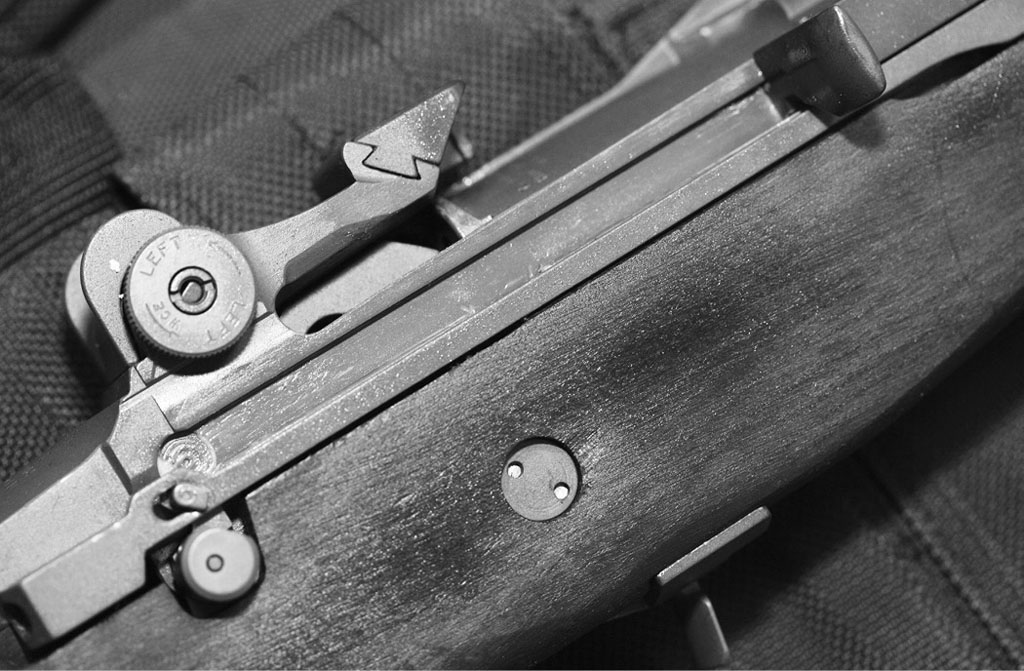
The M14 was supposed to replace everything. The selector switch would go right where the button is on the one you see here.


